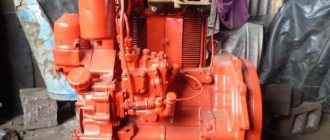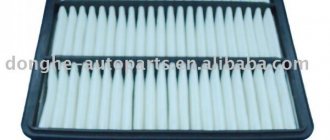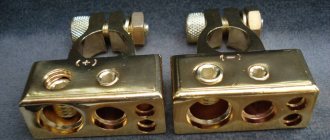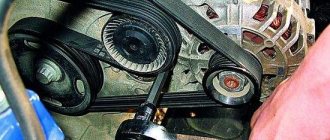The engine is one of the most important elements in a car. It is the design of the engine, its characteristics and reliability indicators that motorists put at the forefront when choosing a car. Nowadays, in addition to engines, other elements are important, such as electronics, gearbox and chassis, but with the development of disassembly and qualified repair services, these elements are increasingly fading into the background. Availability of spare parts and availability of repairs affect. Motors still remain the most complex part in a car, especially when it comes to domestic cars. Therefore, in our article we will analyze in detail the entire family of Lada Xray engines.
general information
On Lada Xray models, engines are available in three variations, but their general design is similar: gasoline inline four-cylinder units, with 4 valves per cylinder (16 valves in total) and two camshafts. True, this is where the similarities between the engines end. Considering the general characteristics of the Lada Xray, the engines installed on the model provide good power and torque, which is quite enough for everyday city use.
Let's take a closer look at which engines are equipped with x-rays and what are their main differences. However, before this it is worth mentioning that not all car models and trim levels are equipped with domestic power units. It will not be a secret for advanced car enthusiasts that new Lada models are created on the basis of the B0 platform. And since AvtoVAZ assembles models using Renault-Nissan technologies, many engineering solutions are borrowed from these manufacturers. The motor in this case was no exception, so AvtoVAZ installs the Nissan engine on the Xray in some trim levels.
Description of development capabilities
As can be seen in the proposed photos, which were taken during the preliminary display of the X-Ray and Vesta concepts back in 2014, this car has impressive overall dimensions. The length of the body is 4165 mm, its width is 1764 mm and its height is 1570 mm. These dimensions, as well as the wheelbase with a length of 2592 mm, will remain, according to the designers, the same for all Lada X Rey cars. Characteristics related to other indicators and parameters may differ significantly.
Regarding modifications and changes to this model, the designers and the general director of the AvtoVAZ automobile concern announced that X-Ray will be produced in three different drive versions. The body, according to the management of the concern, will remain unchanged (relative to the form in which the Lada XRay is now mass-produced) - however, the possibility of easy restyling is not excluded if necessary.
Currently, only the front-wheel drive version of this new car is ready for sale. The release of the all-wheel drive version of the Lada X-Ray Cross in the form of a full-fledged SUV should take place in the second half of 2021 - and around the same time a car with switchable 4x2 all-wheel drive will be released, combining all the advantages of the two modifications described.
Motor from Nissan in Lada X Ray from the factory!
The news about the appearance of the X-ray with a Nissan engine inspired many fans of the brand, since VAZ engines have never been distinguished by excellent quality and reliability. And now there is an alternative, a massive and reliable one. The Nissan engines with which AvtoVAZ equips new models have long been known among car enthusiasts, since the origins of the creation of this unit date back almost to the beginning of the 2000s.
The model of this power unit is H4M, which is essentially a converted version of the Nissan HR16DE engine. This unit appeared on the market in the early 2010s and during this time has proven itself well among servicemen and owners of Renault Sandero, Logan, Duster, etc. Since 2015, full-scale production of the Lada X Ray with Nissan engines began, although the name of the engine itself was changed to N4Mk.
The displacement of the N4Mk engine is the classic 1.6 liters, and the power of the Lada X Ray with a Nissan engine is 110 hp, and the torque varies at around 146-148 Nm. Structurally, the H4Mk is an aluminum cylinder block and an aluminum cylinder head. The valves in the cylinder head are located on classic mechanical pushers, and the timing mechanism is carried out through the use of a chain in the design. There are two camshafts in the head, and there is a phase regulator on the intake shaft. The fuel injection system is electronic, with two injectors per cylinder.
The xray with the H4Mk engine has proven itself well over the years. The engine is reliable and maintains its service life of 200+ thousand without any problems, taking into account regular maintenance and careful operation. Of course, we can’t do without sores:
- with regular downtime in traffic jams or low mileage, oil scraper rings suffer;
- due to the design, it is necessary to regularly adjust the valve clearance;
- The timing chain is stretched.
Engines Lada X-Ray
As you know, the release of new Vesta and X-Ray models is an important step towards the development of AvtoVAZ. For this reason, the developers approached the issue of the technical component with full responsibility, while motors were in the first place for the company’s engineers. So let's take a look under the hood of the Xray.
First of all, this car received not one, or even two, but three engines. Two types of units are domestically developed (VAZ-21129 and VAZ-21179), and the car can also be equipped with the HR16DE power unit, which is produced by Nissan. Moreover, each type of internal combustion engine is modern and fully complies with recommended norms and standards.
- Let's start with the VAZ-21129. This type of installation is a time-tested gasoline engine that AvtoVAZ has been installing on its various models for quite a long time. The engine is in-line, 4-cylinder, 16-valve, has a displacement of 1.6 liters and is located transversely.
The engine received an electronically controlled distributed injection system and a timing belt drive. Power is 106 hp, torque 148 Nm. With such an internal combustion engine, the car accelerates to “hundreds” in 11.4 seconds, the maximum speed is 176 km/h.
The power unit complies with the Euro-5 environmental standard; in the city this engine consumes just over 9 liters. AI-95 fuel, on the highway you can meet 7.2 liters, in the combined cycle the consumption is less than 6.0 liters.
The Lada Xray VAZ 21129 engine was created on the basis of the VAZ 21127 engine, which is well known to car enthusiasts from the Priora model. At the same time, the power plant was significantly improved. It is worth noting that dampers have appeared in the intake manifold, which allows you to change the length of the manifold. The result is that the engine operates with maximum efficiency and performance at both low and high speeds.
The engineers also got rid of the mass air flow sensor, replacing it with an air temperature sensor and an absolute pressure sensor. This approach made it possible to significantly improve the quality of mixture formation, as well as eliminate the known problem associated with unstable speed (speed floats).
The engine has become less vibration-loaded thanks to modified supports and the method of mounting the internal combustion engine in the engine compartment. Also, the modified intake and exhaust reduced the overall noise during operation of the unit in different modes. As a result, acoustic comfort has significantly increased and the level of vibrations transmitted to the body has decreased.
- The Nissan H4M-HR16DE engine is the brainchild of AvtoVAZ partners, namely the Renault and Nissan Alliance. The engine is well known and has long been installed on the popular models Nissan Note, Tiida, Nissan Qashqai, etc.
This engine also has a displacement of 1.6, an in-line engine with four cylinders and 16 valves. This unit has distributed fuel injection, the maximum power is 110 hp. s., the torque characteristic is at around 150 Nm. The timing chain drive increases the reliability of the power plant.
Acceleration of the Lada Xray to 100 km/h with such an internal combustion engine takes 11.1 seconds, the maximum speed is 181 km/h. The engine complies with the Euro 4/5 standard and can consume AI-92 or 95 gasoline. Fuel consumption in the urban cycle is fixed at 8.9, in the combined cycle 6.8, and for country driving on the highway 5.6 liters.
Note that this engine for Russia is somewhat derated. In other countries, this engine produces from 115 to 118 hp, but in the Russian Federation and the CIS the power was limited to 110 horsepower, taking into account fuel quality, taxation, etc.
This engine has a timing chain drive. This solution reduces the risk of breakage and also eliminates the need for owners to frequently change the timing belt. By the way, the design of the timing belt does not imply the presence of hydraulic compensators.
On the one hand, it follows that the valves need to be adjusted, although on the other hand, the requirements for the quality of engine oil and the frequency of its replacement are somewhat reduced. Let us also add that on new engines, valve adjustment is usually required at 70-80 thousand km. mileage In practice, it turns out that as part of the maintenance at 80-100 thousand, the chain is changed, the valves are adjusted and the engine can be operated for a long time.
We also recommend reading the article about what the new Polo Sedan engine is like. From this article you will learn about the design features, as well as the pros and cons of the new engine in the Polo Sedan.
This engine also received a variable valve timing system; the phase shifter is mounted on the intake camshaft. Also worth noting is the electronic throttle valve and two injectors per cylinder. As a result, the engine turned out to be high-torque and economical, and in terms of environmental friendliness it was possible to achieve quite acceptable indicators.
- The 1.8 engine in the Lada X-ray with the VAZ-21179 index is, for obvious reasons, of particular interest to many car enthusiasts, since this engine is the most powerful in the line of units. The motor is a new domestic development, and was created separately for the Vesta and Xr models
When creating a new internal combustion engine, engineers took the VAZ 21126 power plant as a basis, using a similar cylinder block. So, the engine is in-line, 4-cylinder, with a transverse arrangement and 16 valves. The working volume is 1774 cubic meters.
Maximum power 122 hp. s., which is available at 6050 rpm. In terms of torque characteristics, the maximum torque is 170 Nm and is available at 3,750 rpm, which is a good indicator for everyday use.
The car accelerates to hundreds in 10.9 seconds, and the maximum speed is 186 km/h. As for fuel consumption data, in the city the specified power unit on the X-Ray consumes 8.6 liters per 100 km. way, outside the city the consumption is 5.8 liters, in the combined cycle 6.8 liters of 95 gasoline.
The gas distribution mechanism has a belt drive, as well as 2 camshafts, which improved the filling and ventilation of the cylinders in different operating modes of the internal combustion engine. It is noteworthy that the new engine for the Lada Xray is very different from other units produced by AvtoVAZ.
Changes affected the engine itself and its parts, the throttle valve, valve mechanism and much more. The throttle is now without a mechanical drive, lightweight valves are used, the variable valve timing regulator has received separate channels for oil supply.
The increased piston stroke made it possible to realize a larger displacement, the crankshaft has an increased crank radius, the oil pump has increased performance, etc. The CPG is also lightweight, the power system was equipped with high-performance injectors, which were specially modified by specialists for this type of internal combustion engine.
Xray with VAZ engines
AvtoVAZ decided to please potential X Ray buyers and released several new engine models:
- VAZ engine with index 21129;
- VAZ engine with index 21179.
Let's look at these Lada X-ray engines and figure out which one is better, more reliable and more economical. So, the origins of power units 21129 and 21179 begin with the release of VAZ models of the 10th family. The general design of the engines has not changed much since then: displacement from 1.4 to 1.6 (and for 1.8 on unit 179) with 4 valves per cylinder and two camshafts, timing mechanism - belt, fuel type - gasoline.
With each new VAZ model, engineers refine these engines, trying to find the optimal balance of power and reliability. Since there are no fundamental changes in their design, in terms of maintainability, everything is excellent with these motors. Now on the market there is simply a myriad of parts for these power units.
Innovations Lada xray with VAZ-21129 and VAZ 21179 engines
Among the innovations that significantly separate the 129 engine from its predecessors, it is worth mentioning the presence of a technological intake system. For the first time in the history of AvtoVAZ, designers have developed and mass-produced intake manifolds with variable intake geometry. This system works as follows: at low speeds, air from the filter enters the engine along a long path, thereby ensuring optimal operation of the internal combustion engine. At high speeds, a mechanism installed in the manifold changes the path of air from the filter to the engine and sends it along a short path, thus achieving good filling of the cylinders even at speeds above 5000. This technological solution allowed engineers to “remove” an additional 8 liters from the engine. With. without serious intervention in the design of the cylinder head and cylinder block. The throttle valve has also changed; now, instead of the archaic cable mechanism, the throttle is controlled by an electronic gas pedal.
In addition to the technologically advanced intake manifold, the placement of the power unit has also undergone changes. Due to the use of the B0 platform, these engines began to be installed not on the body, through separate cushions, but on a subframe. True, advanced car enthusiasts did not greatly appreciate this design solution, since with this arrangement it is necessary to use additional xray engine protection.
Xray with VAZ-21129 engine
Lada hrey with a VAZ-21129 engine cannot boast of serious power indicators. With the 129th engine, the car’s power is 106 hp. at 5800 rpm, and torque is at 148 Nm at 4200 rpm. For the modern market these are very mediocre indicators, but despite such characteristics the car turned out to be more or less reliable compared to the version with the 179 engine. AvtoVAZ testers set the maximum speed mark on the track at 172 km/h, and the maximum is determined by electronic restrictions and the design of the gearbox. Advanced car enthusiasts know that they can overcome this mark by flashing the ECU, cutting out catalysts and replacing camshafts, but is this necessary for the average user? The car travels its 130-140 km calmly and confidently; of course, parasitic noise appears in the cabin, but this is due to the general sound insulation, and not to the engine.
Xray with VAZ-21179 engine
Before releasing the model on the market, auto reviewers and auto publications wondered for a long time which engine in the Lada X Ray would be the most powerful. And in 2015, a completely new power unit saw the light - VAZ-21179, with a volume of 1.8 liters, a power of 122 hp (at 6000 rpm) and a torque of 170 Nm (at 3700 rpm). At the moment, this is the most powerful engine in the VAZ line, ever mass produced. Structurally, the cylinder block is not very different from the predecessors of the 10th Lad family. Compared to the 129 engine, the design of the 1.8 liter unit has been simplified in terms of intake - it uses a conventional plastic intake manifold.
During development, the height of the block was increased, which provided a volume of 1.8 liters, the crankshaft was replaced with another one with a larger crank radius, and the connecting rods were also used with others - with a higher height. The pistons in the new engine began to use foreign ones, with developed oil scraper rings and graphite coating. Among other innovations, a phase shifter also appeared, and all parts of the connecting rod and piston group were made lighter, which had a positive effect on power and fuel consumption.
True, high power and torque brought certain problems to this motor. With increased power, the thermal load of the motor also increased. The designers tried to correct this shortcoming by improving the cooling system, but it was not possible to completely get rid of the problem. 179 motor does not tolerate prolonged loads and requires careful attention to the cooling system.
SUV Lada X Ray Cross
The characteristics of the Lada XRay crossover are not yet known. However, it is known that they plan to produce it in two versions: permanent and switchable all-wheel drive. What changes will have to affect these cars in order for them to be considered full-fledged SUVs - off-road vehicles?
First of all, the powertrain layout will probably be significantly redesigned. All-wheel drive transmits engine forces to both wheel axles, ultimately reducing the maximum speed and dynamics of the car in exchange for increased traction. To ensure that the car does not become too slow, the characteristics of the motors will have to be sufficient to meet the needs of all-wheel drive. It is assumed that the base engine will be the currently used 1.8-liter engine from AvtoVAZ with a rated power of 122 horsepower, and to equip more advanced versions - a turbocharged engine of the same brand, enhanced to 140 horsepower.
Most likely, changes will also affect the suspension. The characteristics of the Lada XRay Cross should be aimed at ensuring that the car can be operated comfortably even in off-road conditions. Still, a hatchback with front-wheel drive, although it is the optimal combination of capabilities, is designed primarily for urban use. The suspension, according to experts, will have to be strengthened and modified to fully comply with the portrait of the future SUV.
There is also unconfirmed information that has become available to the public that the concern is going to stop developing all-wheel drive versions of X-Ray. Many Russian motorists have already expressed dissatisfaction with this fact.
However, reviews of the Lada XRay contain too many references to the expectation of all-wheel drive versions for the management of the AvtoVAZ concern to turn a blind eye to them and stop development. As some statistics show, almost half of all car enthusiasts are looking forward to the cross-version of X Rey.










